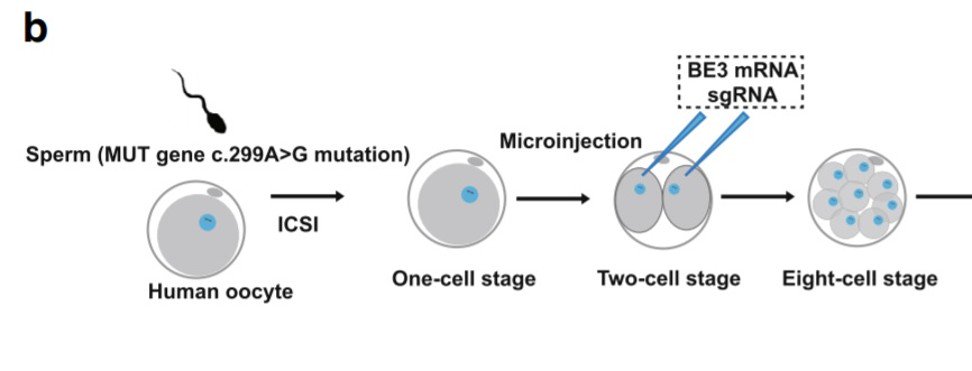Genetic engineering of human embryos will become safe and effective in two years
- Transfer

Safe editing of human embryos can be possible in just one or two years, and the head of the leading Chinese genetic research program says that international rules are currently needed to prevent the use of this technology as a weapon of mass destruction.Professor Yang Hui said his group has made a breakthrough by tripling the effectiveness of a new genetic engineering tool that can change human embryo genes with unprecedented accuracy and safety.
Once the technology is deemed safe, scientists expect that it can be approved for clinical trials and treatment of people in the countries in which this study is conducted.
Yang, a researcher at the Shanghai Institute of Biological Sciences, part of the Chinese Academy of Sciences, said the instrument will be ready for clinical use soon, paving the way for the legal appearance of altered children in a year or two.“Technology is like weapons or drugs. Immoral use, such as creating a superman, needs to be banned forever, ”Yang said.
Ian and his colleagues used the CRISPR variant, known as base editing, to change the group of human embryos that had a mutation that caused congenital malformations.
They found that the mutation disappeared in 80% of the embryos, according to an article published in the journal Genome Biology .
In past experiments, the success rate was less than 30%, but although the increase in efficiency was significant, the group was not satisfied with the result.
“Even if only one unchanged embryo remains, this creates an ethical problem. To use the technology in humans, almost 100% efficiency is needed, ”said Yang.
Chinese researchers achieved a high level of success by refuting the generally accepted position that genes should be edited when the embryo is still composed of a zygote, and introduced the base editor after the embryos were split into two cells using paired needles.

Ian said the secret to their success lies in the timing of the injection. He also said that the group is close to resolving ethical issues and other issues, such as incorrect targeting and incorrect gene changes.
“The technology for editing foundations with a high safety standard should be ready for clinical use in one or two years ... we are ahead of competitors from the United States,” he said.The base editing technique is an improvement on the method used by Chinese scientist Dr. Hee Jiankui, who last year drew global criticism for creating the world's first genetically modified twin girls, known as Lulu and Nana, who were born in Shenzhen last year.
He used CRISPR-Cas9, a popular gene editing tool that is unsafe when applied directly to human genes because it cuts DNA strands and then relies on a cell to take care of repairing the cut.
Various diseases can occur if the mechanisms of cell repair pass the cut thread.
Base editing works by changing the nucleotide or “letter” in the genome, which is considered much safer than classic technology.
According to him, CRISPR, as before, generates too many unwanted mutations and is ineffective when used on human cells, but both China and the United States are racing to solve these problems.
According to him, the trade war added fuel to the fire of competition, as genetic engineering was among the technologies prohibited for export to China.
“Investing in the United States in genetic engineering technology is more than 10 times more than in China,” Yang said, but Chinese scientists are not giving up on the fight.“We are working with the same attitude as the authors of the first atomic bomb,” he said. But he warned that, like atomic weapons, genetic engineering technology could also lead to the destruction of human society if it is not controlled.
